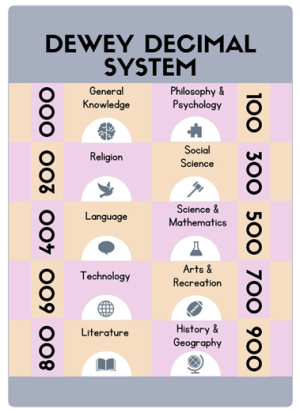Evolving technology: Using AI on the job
Part 2 of a series on AI for public library staff

Have you been thinking about how AI might be able to help with your work in the future? It might be useful to think about the ways AI is already embedded in our daily lives, such as in navigation apps that help us find the best route based on real-time traffic, receiving personalized product recommendations, having email filtered for spam, or using autocorrect when writing messages. These are just a few examples that illustrate the power of AI. It’s also important to acknowledge the trade-offs with these tools, such as the need to review and refine results, the ethical considerations of the use of intellectual property, and the environmental impacts. Chris Markman of Palo Alto City Library offers this caution, “AI is here, and it’s already helping libraries solve real problems. But remember, AI should be invited to the table as a partner, with librarians setting the tone and direction.” This article offers some examples of ways public library staff are using AI to assist in their jobs and gives you some inspiration to explore and learn new tools.
Before you start
The development of AI tools is moving quickly. If AI is unfamiliar to you, consider reading our “Introduction to AI." And before exploring these tools and how they can impact your work, check if your library or municipality has any policies that govern the use of AI. If no policies or guidance exist, it is important that the library addresses this. Author and consultant Nick Tanzi suggests that library policies address data security, privacy, vetted tools, and use cases. See “To learn more” at the bottom of this story for some policy examples.
AI can be a writing partner
Many AI users find benefits in AI as a writing partner. For example, people often use AI to begin the writing process and find it valuable to iterate on ideas by continuing to prompt it with refining information, such as to add specificity or to vary the tone of the content. One way that library staff are using AI is to assist in writing grants. While AI is not going to write an entire proposal, it can help you get started. For example, you can ask an AI tool for ten different project justification statements for the grant and then ask it to rank the answers in terms of how compelling they are. The more context you can give in your AI prompts, the better the response. As the grant writer, you can improve on the AI output because you bring deep knowledge of the organization, and you can add emotional resonance and polish to the content.
Dianne Connery, Director of Development at Pottsboro Library (TX), uses AI regularly to assist in grantwriting. In a WebJunction webinar, she described how she was working on a grant for a wifi-enabled outdoor space next to her library. To help supplement her textual description of the ask, she used AI to generate an image for her proposal:
“I took a picture with my phone of our outside parking lot, and then I said [to AI], put a metal covered awning with six workstations, and with wifi. And it created an image that was so good that I felt like I needed to put a disclaimer on it to say that this doesn't actually exist yet.”
One of the strengths of AI is that it is a very flexible writing tool. You can ask it to take an idea and turn it into a 500-word informative article, then turn it into a headline, then a 100-word call to action, then an op-ed for the newspaper, and finally a snappy paragraph for a newsletter. While the output is unlikely to be ready to publish without a human’s refining touch, it has given you lots of content to work with quickly.
AI can assist with library programs
In a similar vein, library staff are using AI as a partner to generate programming ideas. Again, the more context that can be provided in the prompts, the better the results. For example, providing details such as the targeted age group, the goal of the program, and the parameters of time, space, and budget, will improve the output. You can pull some inspiration from this post from Control, Alt, Achieve, which includes a range of AI prompts that library staff could find helpful when exploring programming ideas.
Library staff can also consider using AI to create questions for a book group like in an example provided by Jim Craner of the Galicia Group. While not all suggestions are viable for public programs, it can save staff time to have a starting point or inspire new thinking.
In a LibraryLink NJ AI Ambassadors webinar, presenters shared an example of a group of patrons who were interested in having a Dungeons & Dragons (D&D) event. The library staff understood that D&D is a complex game and that they couldn’t fully grasp all of the rules. The staff decided to feed documents related to playing the game into NotebookLM which describes itself as a personalized AI research assistant. These documents created the framework and background that could be used to answer questions about the game and assist the staff in running the club – which was a huge capacity boost.
AI can assist with administrative tasks
From recording meeting details, to creating a searchable meeting transcript, to summarizing follow-up items, common administrative tasks can also be supported with help from AI. For example, Otter.ai is an app that processes speech into text using AI to generate real-time transcription. The app can automatically record, transcribe, and summarize a meeting for its user. If a user installs and approves the “Otter Assistant,” Otter.ai gains access to any meetings scheduled on the user’s Google Calendar, Outlook, etc. Recording consent laws in the United States differ by state with some states requiring all present to consent to record and others only requiring one of the parties to consent. Privacy concerns must be weighed against the tools’ benefits and held up against a library’s Acceptable Use Policy if they are used by staff (this story about the UMass demonstrates the need to weigh digital privacy concerns along with accessibilty gains). Before adopting one of these tools, library staff should ask probing questions about data privacy, worst-case scenarios, and accountability to make sure they are comfortable that the tool uses data responsibly and in accordance with library policies and values.
Tools like Microsoft Power Automate and Microsoft Forms can be helpful in automating tasks. For example, when a new employee is hired, there is usually a sequence of onboarding steps including gathering basic information, reviewing policies, and filling out paperwork. Progress tracking can be automated with these tools, saving time and keeping the manager and new employee aware of progress. Once training is completed, an email can be generated congratulating the employee and notifying their manager. Human interaction is still critical, but the details are tracked and saved by AI.
AI can assist with creative work
Creativity is part of what makes us unique and our world interesting. And while AI can’t replace human creativity, it can reshape and inform the process. In the same way it can be a powerful thought partner when grant writing, AI can be a great brainstorming partner to write variations on a promotional message.
The design tool Canva offers libraries creative and practical ways to enhance and promote their services. Users can create compelling flyers, posters, and social media graphics, digital signage, appealing handouts and bookmarks, social media posts, and newsletters. The AI tools in Canva can help with design, the creation of images or videos, or writing copy. There are plenty of YouTube tutorials and how-to guides on using Canva so if this sounds intriguing, jump in and experiment.
A library’s AI policy will dictate what sort of attribution should be applied if AI was used to assist in creating public-facing content. For example: “Some material in this brochure was generated using ChatGPT 4.0 and was reviewed for accuracy by a member of the staff before publication.”
AI can assist with patron services
Library staff are using AI assistants to help users navigate services. For example, some libraries have AI chatbots available 24/7 to answer common questions about library services, hours, and resources. Others use voice assistants like Siri connected to the library catalog to increase access to materials. These assistants can even provide recommendations based on a user’s past selections and preferences. While these assistants certainly increase accessibility, they are not without cautions, such as privacy concerns, inaccuracies, and the added value and context that a human can provide.
This is an example from academic library colleagues who shared their experience using a chatbot, which has some useful lessons for public libraries.
What comes next?
AI will not replace library staff’s ability and need to offer customized service with human connection. But, AI is certainly impacting society at this moment. Chris Markman from Palo Alto City Library summarizes this well: “AI has the potential to transform libraries, making them more accessible, inclusive, and efficient. For those ready to dip their toes into AI, the future is full of possibilities. With curiosity, a bit of skepticism, and a commitment to our values, we can harness AI to better serve our communities." Embrace the next step in your learning and try out a few of these new tools, and maybe share what you find with a co-worker. You’ll start to see a range of possibilities and the difference it can make for you and your work.
To learn more:
- In this 2025 WebJunction webinar, “AI and public libraries: Panel discussion”, learn about AI from the vantage point of the panelists.
- Brainstorming with AI: This webinar from the Ohio State University Libraries is a great guide to using AI as a brainstorming partner.
- Grant writing: The video, "Using AI to write grants" offers some tips.
- Privacy issues: Jennifer King from Stanford provides an overview in Privacy in the AI Era.
- Canva: This guide from the University of Guelph explores the video features of Canva.
- "Frenemies & That's OK: Useful Tensions & Possibilities Between Libraries & AI" a collection of resources and AI prompts for library staff by Lance Eaton.
- Examples of public library AI policies:

